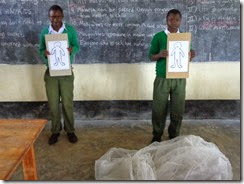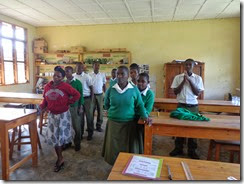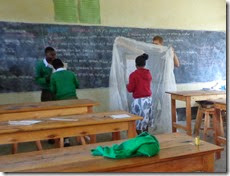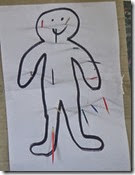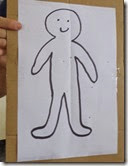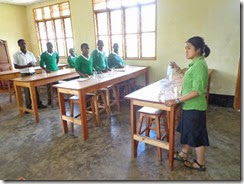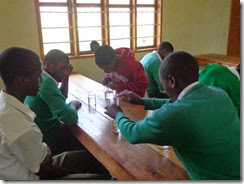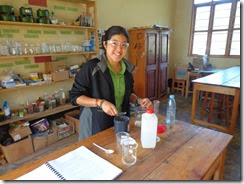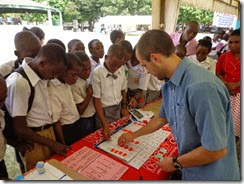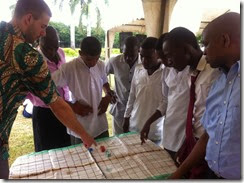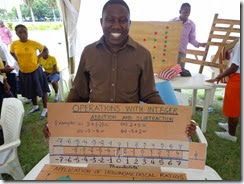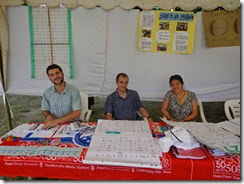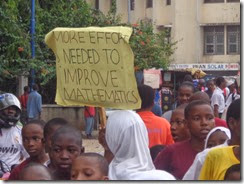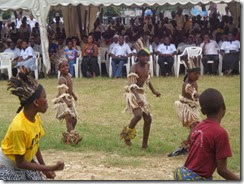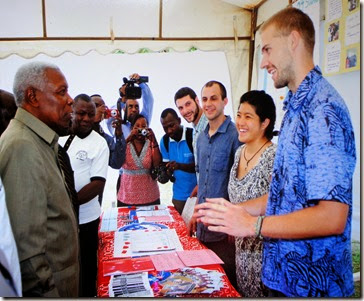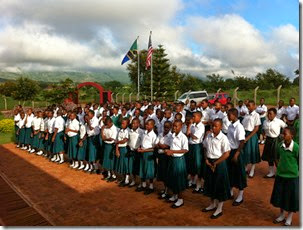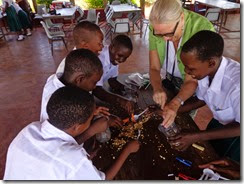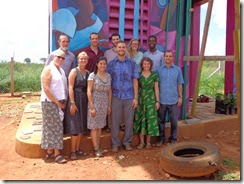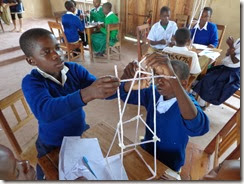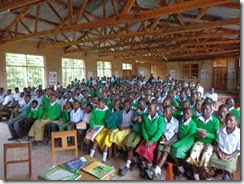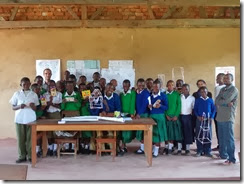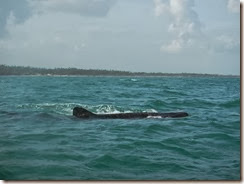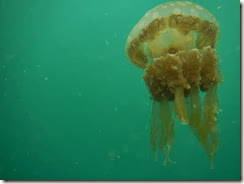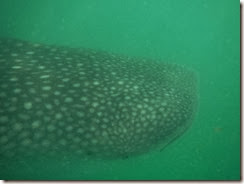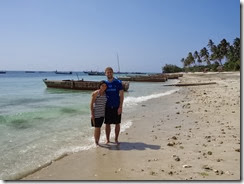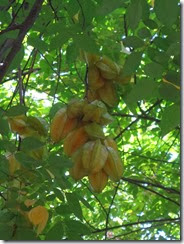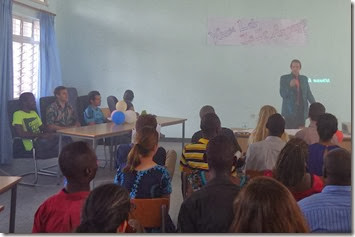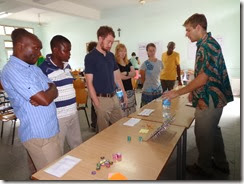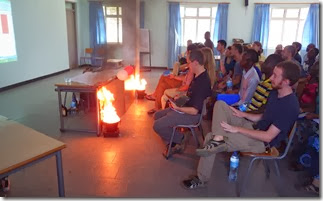Because it’s been awhile since my last blog post (nearly half a year is indeed awhile), let me bring you up to speed on what I’ve been up to over the past five months.
Late April: my PCPP grant for hosting math and science conferences around the country finally came to fruition and got fully funded. Once again, a HUGE THANK YOU to everyone who helped out. My year-long extension dream of becoming a traveling science man in Tanzania was finally a legitimized reality. Over the following four months, I was more or less in Shika hyper-drive, and in all, nine conferences were funded by the grant around different regions of the Southern Highlands which I call my home (Mbeya, Ruvuma, Njombe). Some of the highlights included:
May: Njombe Science Conference 2.0
Ever since the very first competition I took part in during March 2013 (also in Njombe), I’d been wanting to put together a giant week-long event specifically for math and science activities. This one fulfilled every one of my hopes/expectations and really was the culmination of all the other conferences and trainings I’d done throughout my last year of service and entire 1-year extension. Three PCV schools in Njombe came and brought six Form II students each.
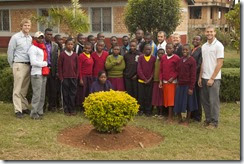
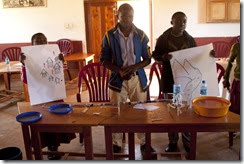
Left: Participants at the 2014 Njombe Science Conference; Right: A water transport system
We tried some new activities like a water transport design competition, a construction-based game for communication and following directions (both much needed and under-appreciated skills here), science relay races, and the best part of all – science fair projects.
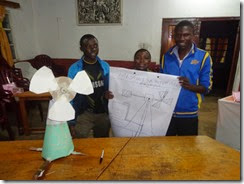
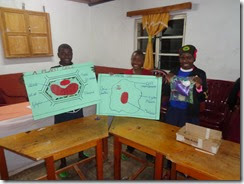
Students present their science fair projects. Left: windmill; Right: plant and animal cells
Groups chose their own preferred topics and presented in front of all of the other teachers and students. The projects were so great! None of them had ever done (or heard of) science projects before, but they were all super creative and artistically done. I was so impressed by all of the students.
To cap off a great week, we arranged for a tour of the nearby Njombe Milk Factory. The kids got to see how to test for milk pH, learned about pasteurization and got to try cheese for the first time in their lives. Even most of the Tanzanian teachers had never had it before.
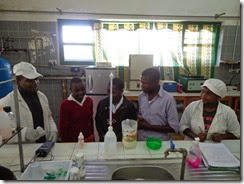
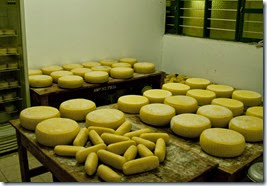
Left: Students get a hands-on tour of the Njombe Milk Factory. Right: CHEESE!!!
August: Primary School Conference
I had never done a conference for primary school kids before, and in fact I still haven’t, because this one was planned, organized and run entirely by a small group of the Form II students who participated in the Njombe conference. These students were so excited about what they had done in May that they approached Joe, one of the Njombe PCVs, and asked if they could put on a similar conference for younger students.Talk about paying it forward! Of course we were able to set up a time for them to teach nearby primary students (actually another volunteer’s site). And the best part was, they didn’t just copy what we had done in the previous conference; they came up with new activities and competitions to do on their own. All we PCVs did was provide the materials, which were still cheap enough that they could’ve gotten them themselves (slash most of them were '”garbage” items from the village anyways).
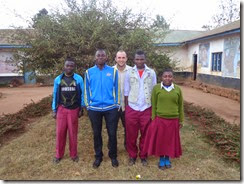
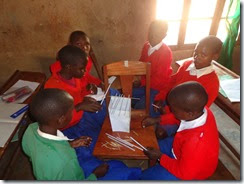
Left: Njombe PCV Joe Antonacci and his Form II student leaders; Right: Primary students engaged in a science competition
Last year I was able to take part in a couple of teacher trainings, and I have to say these students went further above and beyond the call of duty than many of the teacher trainees did. Sometimes it can be difficult to provide teachers with the motivation they need to really take hold of these kinds of alternative teaching techniques – there’s no precedent at their schools, elder teachers stick to old methods of teaching and younger ones don’t want to disrespect them, and many want some financial incentive for going out of their way and adding to their teaching workload. But these students weren’t held back by any of these limitations; they just saw an opportunity to give back to their community and help out their “young brothers and sisters,” and they did it. And that’s why, after all of the conferences and trainings that I’ve been a part of during my three years, I really do think that the secondary students hold the key to the sustainability of projects like this, and it will be through them that real changes are made to the way math and science are taught and understood in this country for years to come.

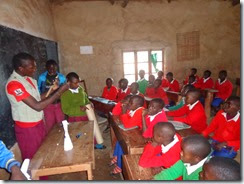
Left: Participants at the Mlevela Conference; Right: Form II students teach hands-on science activities to primary level students
September: Time to Go
Luckily I was able to fit in all of the conferences that I had hoped to by mid-August, because I knew that I would be leaving my school Wilima in early September. For a while, I thought that I would be getting a replacement at my site, but when all was said and done, no one form the new class was assigned to follow me. It was sad for my school to hear, since they’ve been having volunteer teachers from all different countries since 1992! But they were incredibly grateful to me and completely blew me away with an extravagant going away party on my final day.


Left: Final photo shoot with my Form II students; Right: Chemistry and Biology teachers from my school
Tanzanian “sherehe”s (celebrations) typically consist of the same key ingredients: delicious food, long-winded speeches by the guests of honor, and the giving of “zawadi”s (gifts). Finally I was the one getting to give the long speech, for the first time since our swearing-in ceremony three years ago. Unfortunately all of my orange suits are currently back in America, so my wardrobe wasn’t quite up to par from that first time. I really wasn’t expecting any large going away event, but as I’ve learned, saying farewell is a huge sign of respect here. So my school did everything they could to send me off right.They even gave me a couple of beautiful wood carvings as a parting gift – so nice!
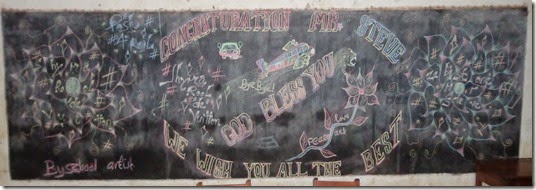
Another sherehe tradition – students writing/drawing a message on the board. What a great artist this one was!
As a zawadi from me to the school, I made a kind of picture story book about my life in America to leave as a memento for the students and teachers and also to help expose them to some more interesting differences between the US and TZ.
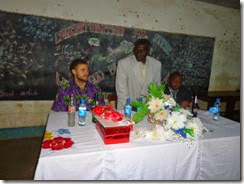
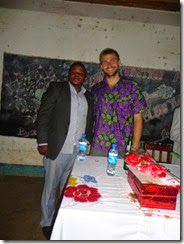
Left: Me with the school manager and headmaster at the table of honor; Right: Me and Mr. Mbungani, fellow Math and Physics teacher
But before my school’s going away party (allow me to backtrack a bit), Belle and I had our own PCV send-off at her site in Tukuyu. There were seven of us who came, and this time we celebrated the way Americans like to – by stuffing our faces with delicious food. Belle and I arbitrarily chose Christmas as the theme, because, why not? Plus there are a lot of pine trees near her site, so we found a fallen (large) branch and brought it inside to decorate. The house was quite festive, and I gladly took the excuse to whip up some eggnog.
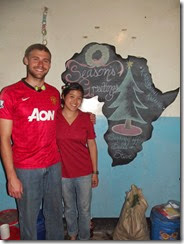
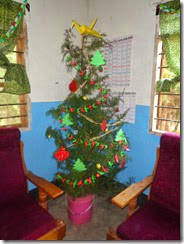
Plenty of festive Christmas decorations for our going away party
We also had a MASSIVE bonfire to burn two years worth of Belle’s old papers; we played board games and bags; and we rented a generator so that we could watch movies on a projector (LEGO Movie was the choice). It was the perfect way to say goodbye to some of our closest friends in country, and led Belle into her shadow week of hosting several of the new volunteers, while I returned home for my last week at site.
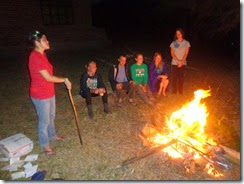
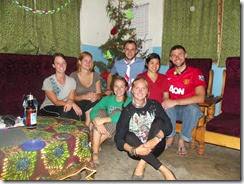
Left: Roasting documents rather than marshmallows; Right: Awkward family Xmas photos
From there, we spent our final week in Dar, completing our scavenger hunt of paperwork around the PC office to get ourselves off the books. It used to be a very anticlimactic finish to your service, just getting the final signature and a, “Well… see ya later…” But now the country director has a special bell that we get to ring when we are all finished. A more suitable way of getting the “R” in RPCV (Returned Peace Corps Volunteer).
![[1556305_2231099387172_6851480185553591032_o%255B3%255D.jpg]](https://blogger.googleusercontent.com/img/b/R29vZ2xl/AVvXsEhDJ74KQCbsOgmVbWRwwerP1PBLBDukswuzc9YJjYydZk6C_iWUwPCTgh-xgJWTE73qKQGOnpW-ZtxLPBg1p7KXyBCbFpmTPTrYL5KKOljnKo9XKTv8BSMOKaoo_oAiVRQMCJtpzrR3EWq1/s1600/1556305_2231099387172_6851480185553591032_o%25255B3%25255D.jpg)
And now here I am, sitting in the airport, eating my three-year-old M and M’s from our original staging days in Philadelphia that I saved for this occasion, ready to leave Tanzania. All of the goodbyes over the past several weeks have come with many mixed emotions – sad to leave so many great people and memories behind, but also extremely excited to begin a new wave of travel adventures. Belle and I are ready to embark on our most excellent of journeys around the world for the next two and a half months. Ethiopia – Thailand – Australia (incl. Tasmania) – New Zealand, Japan and back to Chicago just before Thanksgiving. And because this trip is worthy of a higher caliber of documentation, we’ve started a new joint blog for our travels called Belle and Steve’s Excellent Adventure (belleandstevesexcellentadventure.blogspot.com). Check it out!
So kwa heri Peace Corps, kwa heri Tanzania, and kwa heri to all of those following this blog – and THANK YOU for reading!!
